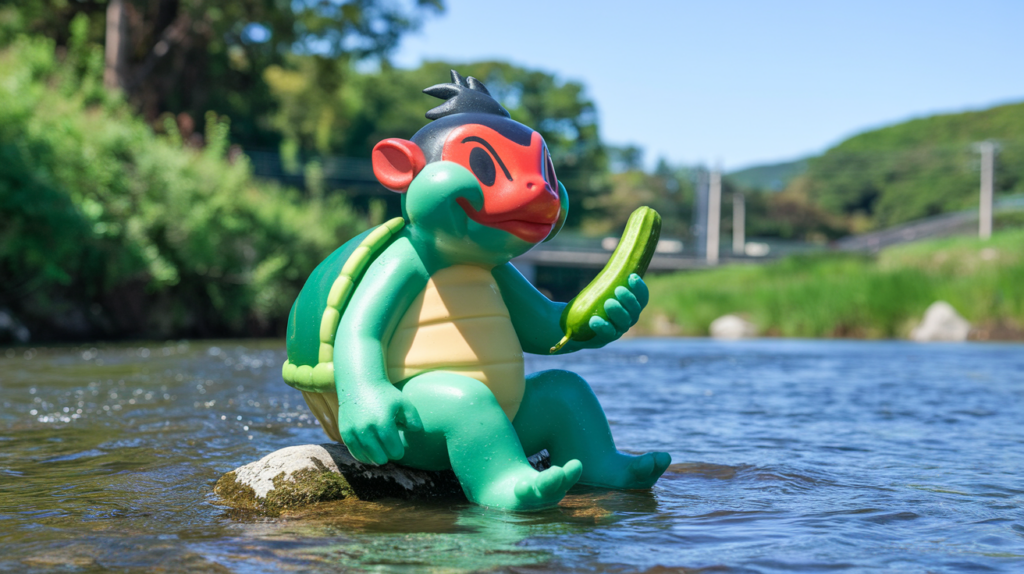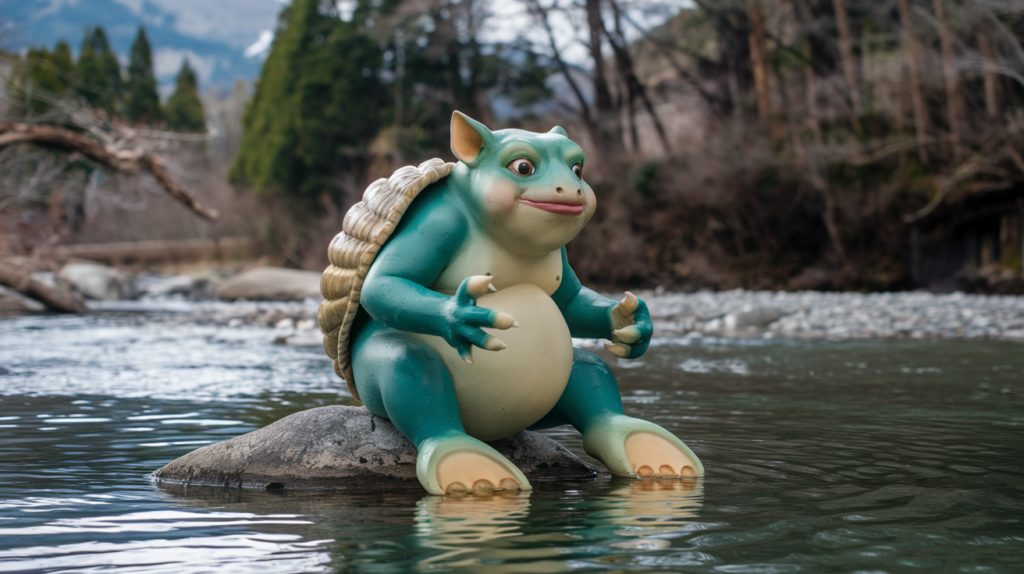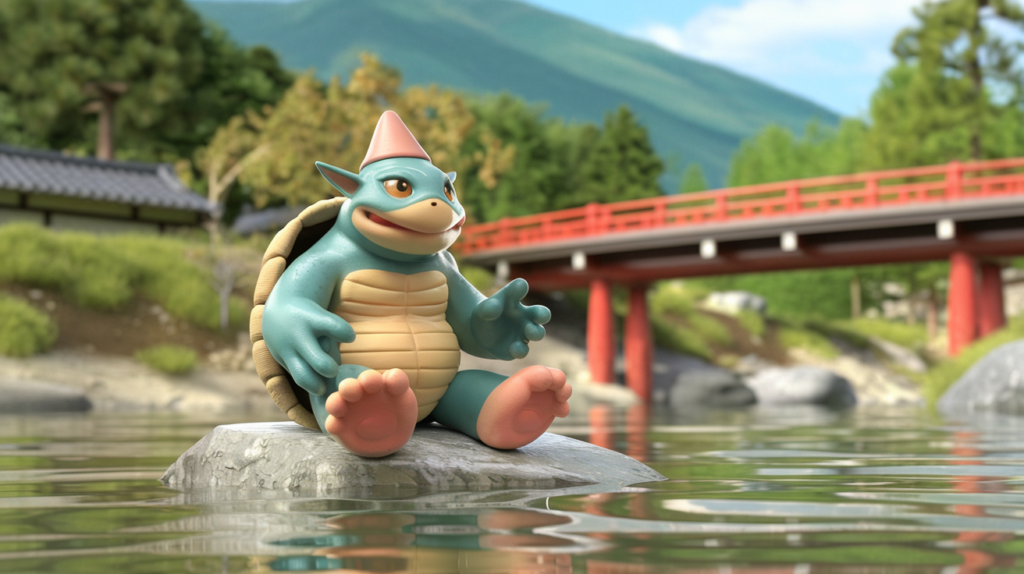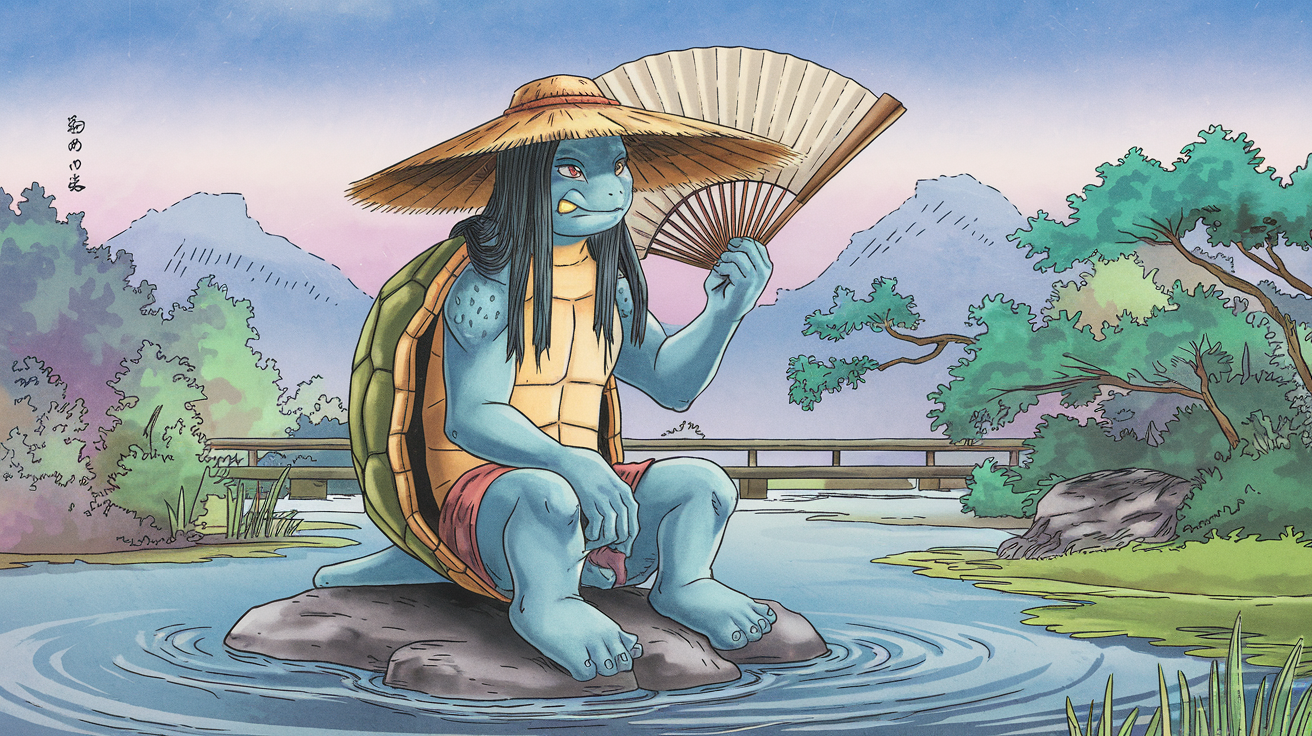What makes the kappa animal one of the most intriguing creatures in Japanese folklore? This mythical being, blending characteristics of humans and reptiles, has captivated imaginations for centuries. As both a trickster and a guardian of nature, the kappa holds a unique place in the cultural fabric of Japan. Let’s unravel the mysteries surrounding this fascinating entity.
What Does the Kappa Look Like?
The kappa’s appearance is both eerie and captivating. Standing at roughly three to four feet tall, its humanoid stature is combined with distinctly reptilian traits. Covered in green, scaly skin, the kappa’s webbed hands and feet hint at its aquatic prowess. A turtle-like shell on its back reinforces its connection to water, offering both protection and symbolic significance.
However, the most defining feature of the kappa is the bowl-shaped depression atop its head. This cavity, filled with water, is the source of its supernatural strength. Without this vital water, the kappa becomes powerless, a vulnerability that plays a significant role in human-kappa interactions.

How Do Kappa Behave?
Kappa are known for their mischievous and unpredictable behavior. They thrive on pranks, often pulling harmless tricks on unsuspecting villagers. Yet, their antics can also turn dark. Stories abound of kappas luring people—especially children—into rivers, leading to tragic outcomes. Despite their playful tendencies, they are formidable adversaries in combat, possessing incredible strength that belies their small stature.
Interestingly, kappas adhere to a peculiar sense of honor. If their head water is spilled, they become incapacitated. Some folklore suggests that a deep bow from a human can compel the kappa to return the gesture, causing its water to spill and rendering it helpless.
Are Kappas Friend or Foe?
The kappa animal embodies duality in its relationship with humans. In some tales, they are helpful spirits, imparting agricultural knowledge or aiding in irrigation. Farmers might leave cucumbers—reportedly a kappa’s favorite food—by the river as offerings to curry favor.
Conversely, kappas can be dangerous when disrespected or provoked. Legends recount instances of kappas attacking livestock or even stealing human organs. Yet, humans have found ways to outsmart them. By exploiting their vulnerability or appealing to their sense of etiquette, people could turn potentially harmful encounters into peaceful ones.

Why Is the Kappa Culturally Significant?
The kappa serves as a symbol of the delicate balance between humanity and nature. In many stories, the creature represents the unpredictable and often perilous nature of water bodies. This underscores the need for caution and respect when interacting with the natural world.
In addition, kappas highlight the importance of maintaining harmony within communities. Through their tales, lessons about respect, cunning, and cooperation are passed down generations. The kappa’s enduring presence in Japanese folklore reflects its deep cultural roots, appearing in everything from ancient scrolls to modern manga and anime.
How Do Kappas Appear in Modern Media?
In contemporary times, the kappa has transcended folklore to become a beloved figure in popular culture. It features prominently in video games, anime, and movies, often depicted with a blend of humor and mystery. Despite its mythological origins, the kappa’s adaptability has ensured its relevance in today’s entertainment landscape.
What Can We Learn from the Kappa?
The kappa animal, though fictional, offers profound insights into human behavior and the environment. Its tales encourage respect for nature’s power and remind us of the importance of understanding and coexisting with the unknown. By delving into the lore of the kappa, we gain not only entertainment but also valuable wisdom about the world around us.

Also read:Unlocking the Power of Pinterest: Your Ultimate Visual Discovery Tool
Final Thoughts
The kappa animal remains a timeless figure, bridging the gap between myth and morality. Its stories, filled with humor, danger, and wisdom, continue to inspire and educate. Whether as a symbol of nature’s unpredictability or a trickster teaching humility, the kappa’s legacy endures in the hearts and minds of those who encounter its tales.







